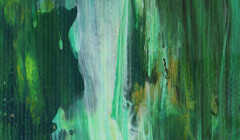
From greenwashing to ‘green hushing’: what’s behind the recent silence around sustainability?
Businesses must find the balance between action and transparency to work toward a more sustainable future.

Brands need to find the type of funny that works for them.

Humour’s back in advertising, but for us, it never really left. Maybe it’s the Scottish roots, the gallows humour, or the irony of mastering both alcohol and health advertising. Whatever the reason, working at Leith has always been a laugh - crafting clever, funny ads and leaving meetings in stitches.
After speaking at the Healthy Dose of Humour event with comedian Ria Lina and the Advertising Association, we noticed an interest in how humour is used in advertising. So we put together 5 golden rules.
Humour is a broad church - it includes intelligent wit, gentle charm and making people smile. A 2001 study identified 7 different forms of humour used in advertising: Comparison, Personification, Exaggeration, Pun, Sarcasm, Silliness and Surprise.
Looming large over several of these categories is Schadenfreude - the pleasure we get from watching someone else’s misfortune - one of the most effective tools in advertising. These variations mean that humour can be explored by any brand, no matter how serious or mundane. It doesn’t always have to be banana skins and faulty ladders.
Why does a joke fall flat? Why do some ads make you cringe? The answer lies in authenticity.
The Economist isn’t suited for slapstick. World Wrestling Entertainment probably shouldn’t use dry wit (actually, maybe that could be really funny?). The key is choosing a humour style that feels authentic to your brand. This excellent diagram by Kantar can guide you in choosing the best humour style based on your brand’s value and proposition.
Any brand can be funny, it’s about finding the right fit.
We work with many health brands and organisations, and while the concept of using humour to speak to patients may seem inappropriate, it can actually shatter taboos and open the way for honest, meaningful conversation.
With sensitive topics, timing is everything - humour will not be appropriate in moments of diagnosis, but it may be helpful in disease prevention or as a coping mechanism once bad news has been processed.
People with health conditions, along with their families and loved ones, don’t suddenly lose their sense of humour. Don’t try to guess what they want to hear - speak to them and understand what resonates.
Many brands convince themselves that using humour to advertise their product or service is too big a risk - that if they do it incorrectly, the results won’t bear thinking about. In fact, a staggering 95% of business leaders still harbour concerns about using humour in comms.
The reality is that getting purpose wrong in ads is far more damaging. From being overly saccharine and using poorly chosen spokespeople or celebs, to employing language and messages which speak inauthentically to the target audience, purpose-driven ads are far from the safe option. The key is to speak to your audience, not the person at the next desk. The fact that you don’t find something funny doesn’t mean your audience won’t.
So, you’ve decided to play it safe - same messaging, same tone, same comfy familiarity. However, one person’s ‘safe’ is another person’s ‘dull as dishwater’ - and being dull comes at a price. A boring ad needs to spend 7.3% more on media to match the performance of an interesting one. Humour moves people; it cuts through the fog of banality and stays in the memory of your audience. Credos’ research shows that people who regularly laugh at advertising are:
So, even financially speaking, it’s far riskier being boring than funny. In the end, not using humour might just be the biggest joke of all.
Debbie is an award-winning Art Director at Leith who is well-versed in breaking down taboo topics with a touch of humour. She works across a wide range of clients and sectors, including Lovehoney, Brook, HANX, Scottish Government, Irn-Bru and Famous Grouse. With a passion for pushing boundaries, her Scottish humour always comes through. A Singaporean in Scotland, Marion is an award-winning copywriter at Leith where she works on a wide variety of health clients. She loves creative thinking and is always looking to create ads that will make you see differently. In 2023, she was a Cannes Young Lions Global Gold Winner, representing the UK with her creative partner, Joe.
Looks like you need to create a Creativebrief account to perform this action.
Create account Sign inLooks like you need to create a Creativebrief account to perform this action.
Create account Sign in